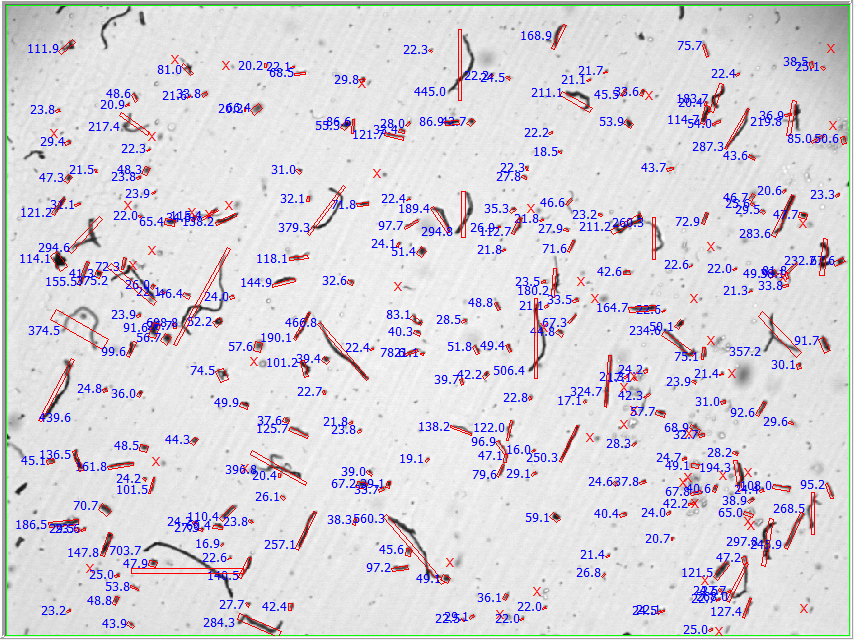The challenge
Here we study the properties of certain cellulose fibers from natural sources. They are sold as thickening agents in a variety of household consumer products such as cosmetics, shampoos, etc. Length, width (thickness) and curl strongly affect the viscosity of the final product.
Applicable measures
Measure
![]() Fiber Width
Fiber Width
![]() Fiber Length
Fiber Length
![]() Fiber Aspect Ratio
Fiber Aspect Ratio
![]() Fiber Curl
Fiber Curl
Range of acceptance
5 – 500 microns
10 – 1000 microns
1.0 – 50.0
0 – 1.00
Typical image

Notes
Fibers of this type are suspended in propanol to prevent rapid dissolution, and then mixed well. Because long fibers tend to align themselves with the direction of flow, lengths longer than the width of the flow cell can be handled.
The image above shows Fiber Length values. The fiber shape model straightens out long thin fibers and reports length, width, and aspect ratio of the straightened rectangle.
Results

Fiber Width is symmetrical about the mean (16 microns). Fiber Length shows a sharp rise and then a straight dropoff down to 500 microns. The dropoff is almost linear (on the log scale). Fiber length distributions typically do not conform to the usual particle size distribution shapes.

Curl is actually a measure of straightness, numerically — 1.0 is perfectly straight; lower values mean more curl to the shape. Aspect ratio, the ratio of length to width, shows a mean value of 7.7. The largest aspect ratio seen was about 50.

